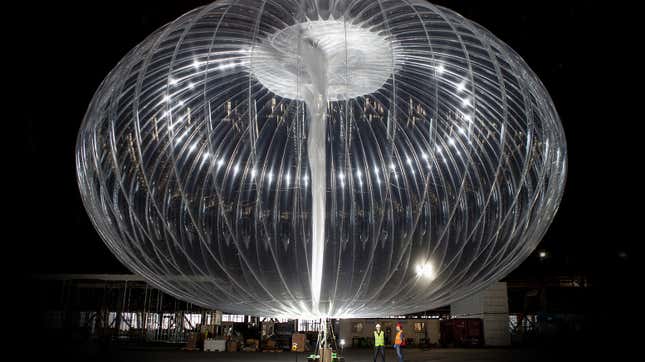
Alphabet, the parent company of Google, has deployed a fleet of internet-delivering, high-altitude balloons in Kenya, an initiative that the company’s CEO said will be “the first of many” future commercial deployments in other parts of the world.
Loon chief Alastair Westgarth announced in a blog post this week that the 4G LTE network connectivity tools—impressively large, internet-beaming balloons that hover roughly 20 kilometers (or about 12 miles) in the stratosphere—said the project marked the first use of the technology in Africa, as well as the first time Loon had been used for internet connectivity in a non-emergency context.
Loon partnered with telecommunications provider Telkom to deliver internet connectivity to a 50,000-square-kilometer (31,000-square-mile) region in rural Kenya, a spokesperson said Tuesday, specifically an area that’s mountainous and harder to provide service in. Around 35 or more of the Loon balloons—which the spokesperson characterized as “floating cell phone towers”—will support internet connections for video, email, texting, browsing, and apps like YouTube and WhatsApp.

The service relies on ground stations that send signals to constantly shifting balloons, which deliver connections to regions below for those with LTE mobile devices. Westgarth said the company will continue to deploy balloons in the coming weeks, allowing service to “become more consistent,” though service can still be affected by things like stratospheric winds, among other factors—the clear downside to the technology.
“As our balloons, or flight vehicles as we call them, float on stratospheric winds, they work together to provide coverage to areas below,” Westgarth said. “Depending on their position, a flight vehicle can alternate between actively serving users, operating as a feeder link in our mesh network to beam the internet to other vehicles, or repositioning itself to get back to the service region. Still other flight vehicles can be staged nearby (in stratospheric terms), waiting to enter the service region where they can begin providing connectivity.”
The Loon balloons were previously used to deploy emergency service in disaster zones, as in Puerto Rico in the wake of Hurricane Maria in 2017 and in Peru last year following a magnitude 8.0 earthquake. They have also, notably, been repeatedly mistaken for UFOs—which, given the fact that the balloons resemble massive ethereal jellyfish, makes sense.